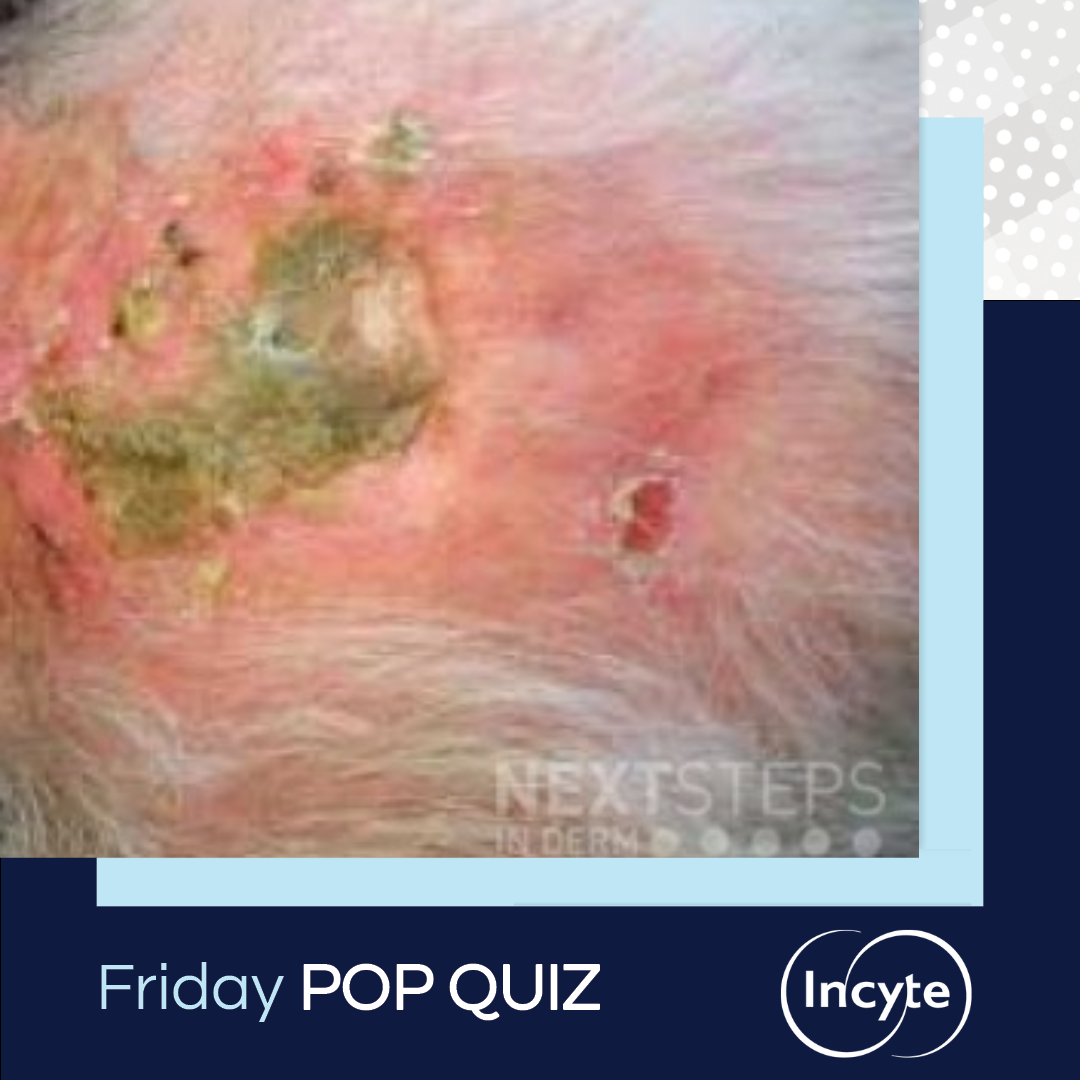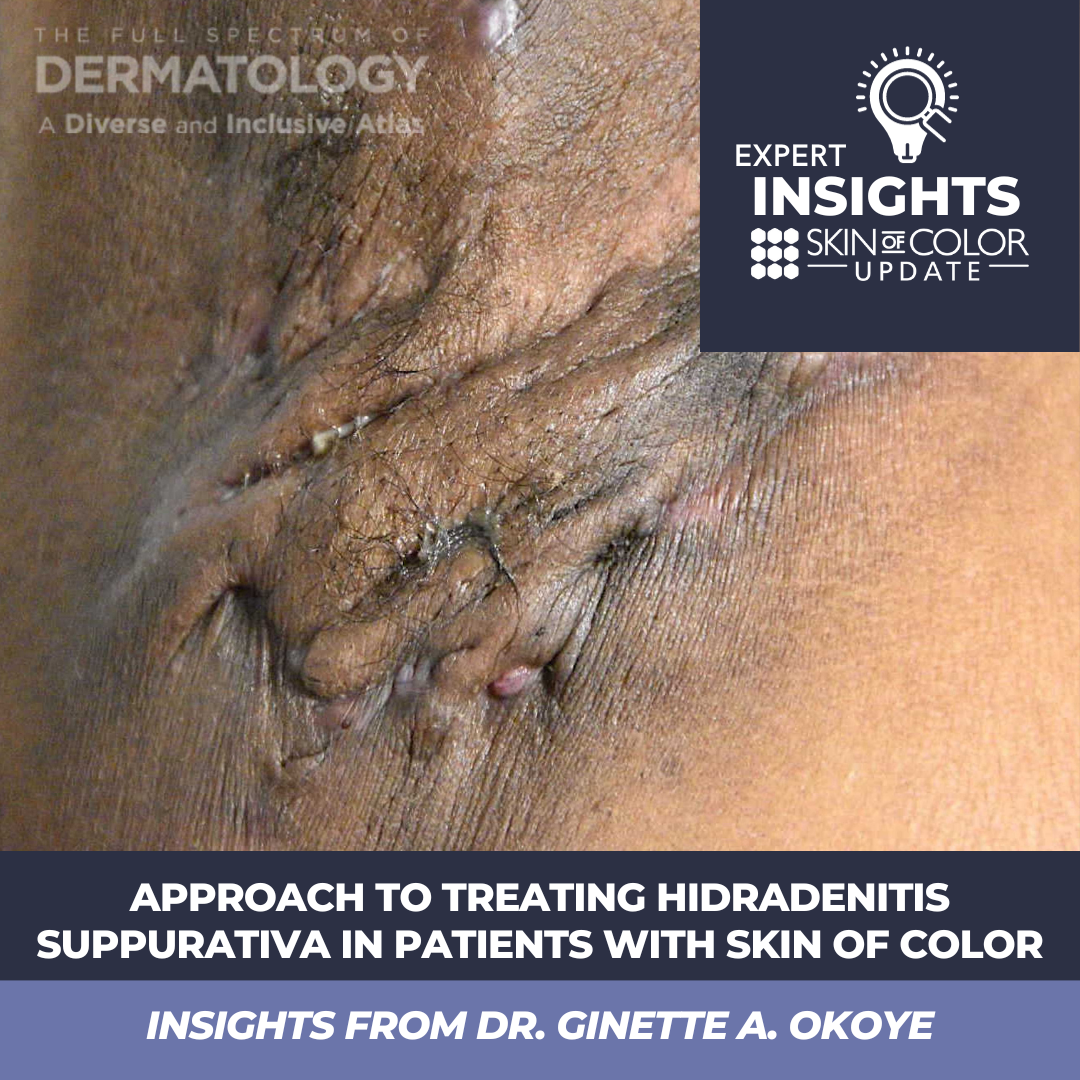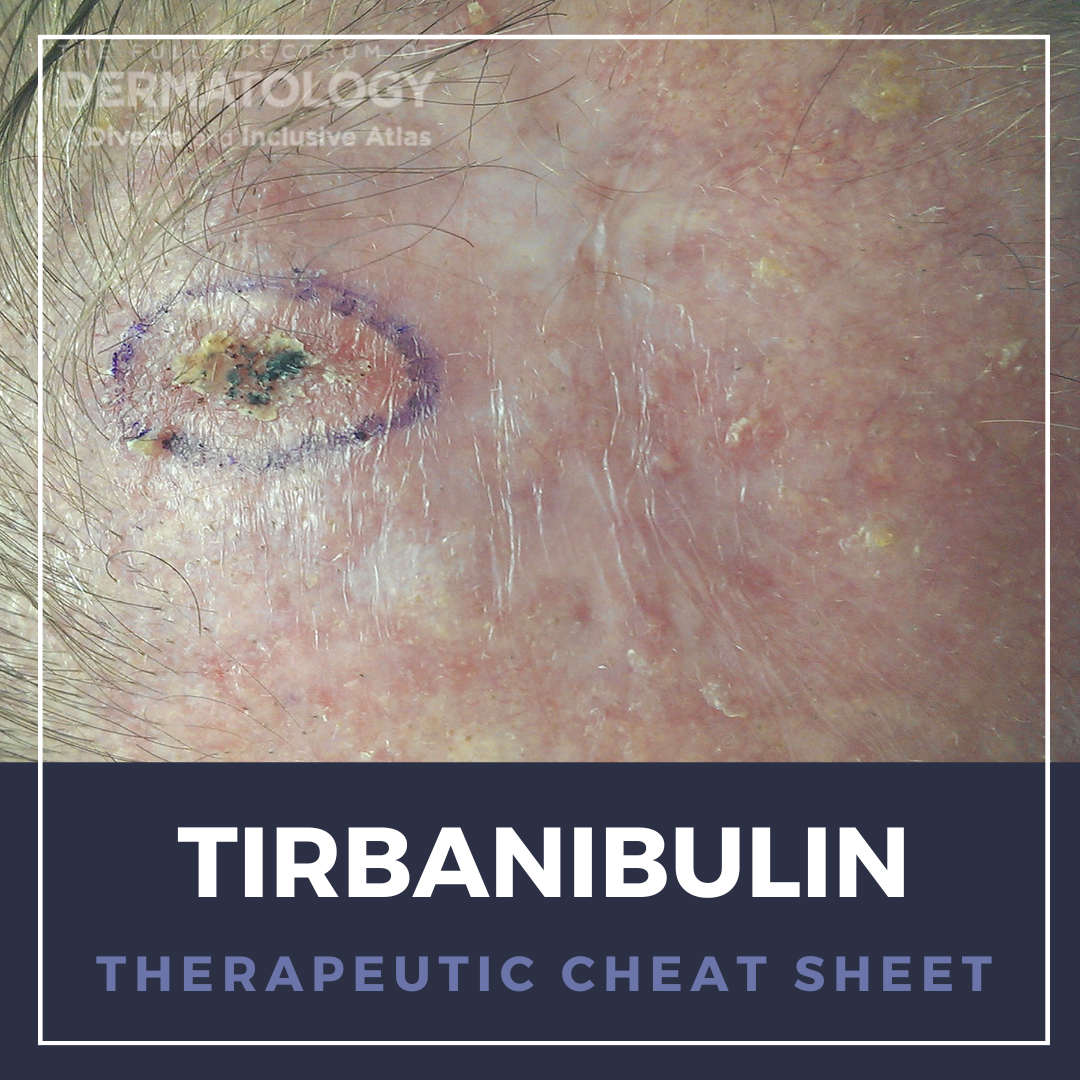Basal Cell Carcinoma – Friday Pop Quiz 12/22/2023
 A 91-year-old man with a history of basal cell carcinoma presents for evaluation of the shown lesions on his scalp. His daughter, a nurse who is present with him for his appointment, notes that he had purulent bumps in the same area a few days earlier. Which of the following is the most appropriate treatment for the patient’s condition?
A. Oral cefdinir
B. Patch testing
C. Skin biop …
A 91-year-old man with a history of basal cell carcinoma presents for evaluation of the shown lesions on his scalp. His daughter, a nurse who is present with him for his appointment, notes that he had purulent bumps in the same area a few days earlier. Which of the following is the most appropriate treatment for the patient’s condition?
A. Oral cefdinir
B. Patch testing
C. Skin biop …
 A 91-year-old man with a history of basal cell carcinoma presents for evaluation of the shown lesions on his scalp. His daughter, a nurse who is present with him for his appointment, notes that he had purulent bumps in the same area a few days earlier. Which of the following is the most appropriate treatment for the patient’s condition?
A. Oral cefdinir
B. Patch testing
C. Skin biop …
A 91-year-old man with a history of basal cell carcinoma presents for evaluation of the shown lesions on his scalp. His daughter, a nurse who is present with him for his appointment, notes that he had purulent bumps in the same area a few days earlier. Which of the following is the most appropriate treatment for the patient’s condition?
A. Oral cefdinir
B. Patch testing
C. Skin biop … Continue reading "Basal Cell Carcinoma – Friday Pop Quiz 12/22/2023"


 Hidradenitis Suppurativa (HS) is a challenging dermatological condition characterized by painful, recurrent, and often disfiguring skin lesions. In this article, we will explore the expert insights of Dr. Ginette Okoye, Professor and Chair of the Howard University Department of Dermatology, as she discussed her approach to and experience with treating patients with HS at the 2023 Skin of Color Upd …
Hidradenitis Suppurativa (HS) is a challenging dermatological condition characterized by painful, recurrent, and often disfiguring skin lesions. In this article, we will explore the expert insights of Dr. Ginette Okoye, Professor and Chair of the Howard University Department of Dermatology, as she discussed her approach to and experience with treating patients with HS at the 2023 Skin of Color Upd …  INTRODUCTION
Benign Familial Pemphigus, or Hailey-Hailey Disease (HHD), affects intertriginous areas of the skin causing epidermal blistering and vesicles that coalesce into weeping and crusting plaques.¹
The loss-of-function mutation of the ATP2C1 gene causes a disruption in calcium homeostasis of keratinocytes. The resulting dysfunction in desmosomes and cell-cell adhesion causes acanthol …
INTRODUCTION
Benign Familial Pemphigus, or Hailey-Hailey Disease (HHD), affects intertriginous areas of the skin causing epidermal blistering and vesicles that coalesce into weeping and crusting plaques.¹
The loss-of-function mutation of the ATP2C1 gene causes a disruption in calcium homeostasis of keratinocytes. The resulting dysfunction in desmosomes and cell-cell adhesion causes acanthol …  Current field-directed treatments of actinic keratosis (AK), a pre-malignant condition, are often limited by severe local reactions and/or complex treatment. Tirbanibulin, a novel potent anti-proliferative synthetic agent that inhibits tubulin polymerization and Src kinase signalling, offers a convenient, safe, and effective field treatment of actinic keratosis. We continue our surgical Therapeut …
Current field-directed treatments of actinic keratosis (AK), a pre-malignant condition, are often limited by severe local reactions and/or complex treatment. Tirbanibulin, a novel potent anti-proliferative synthetic agent that inhibits tubulin polymerization and Src kinase signalling, offers a convenient, safe, and effective field treatment of actinic keratosis. We continue our surgical Therapeut …  Which of the following conditions is most associated with the findings in this 9-year-old boy?
A. Alopecia areata
B. Atopic dermatitis
C. Neurofibromatosis I
D. Parkinson disease
E. Tuberous sclerosis
To find out the correct answer and read the explanation, click here.
Brought to you by our brand partner
…
Which of the following conditions is most associated with the findings in this 9-year-old boy?
A. Alopecia areata
B. Atopic dermatitis
C. Neurofibromatosis I
D. Parkinson disease
E. Tuberous sclerosis
To find out the correct answer and read the explanation, click here.
Brought to you by our brand partner
…